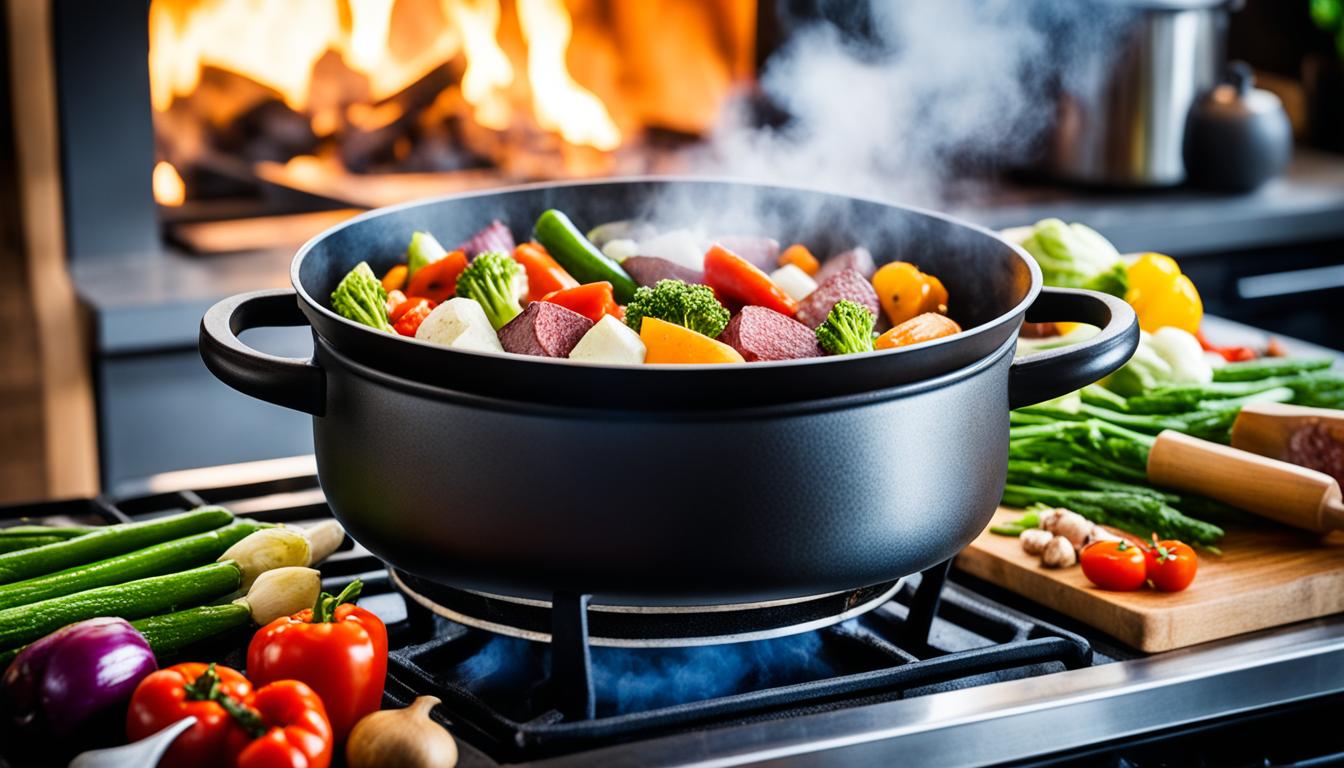Are you tired of using multiple pots and pans for your cooking? Have you ever wondered if there’s a single piece of cookware that can do it all? Well, we have the answer for you! Dutch ovens are the ultimate must-have kitchen tool that offers incredible versatility and convenience. But what exactly makes a Dutch oven so essential? Let’s dive in and explore the benefits of Dutch oven cooking and why you need one in your kitchen.
Dutch Oven vs. Stockpot: Which One to Choose?
A Dutch oven and a stockpot are two essential pieces of cookware with subtle differences that can impact your cooking experience. While they may look similar, understanding their unique features and purposes can help you make an informed decision.
A stockpot is typically taller and lighter than a Dutch oven. It is specifically designed for holding a larger quantity of ingredients and liquid, making it ideal for soups and recipes that require pouring off excess liquid. With its spacious capacity, a stockpot allows for easy stirring and convenient handling of large quantities of food.
On the other hand, Dutch ovens are shorter and heavier, which contributes to their superior heat distribution and retention capabilities. This makes them exceptionally versatile for a wide range of cooking methods. Dutch ovens can be used on both the stovetop and in the oven, making them suitable for braising, slow cooking, and even baking.
While stockpots are not typically oven-safe due to their thinner construction, Dutch ovens are specifically designed to withstand high temperatures. This means you can seamlessly transition your cooking from stovetop to oven without compromising the quality of your dishes.
If your cooking repertoire includes a variety of recipes such as soups, slow-cooked meats, and roasts, having both a Dutch oven and a stockpot in your kitchen can be a practical choice. Each serves a different purpose and offers unique advantages that cater to specific cooking methods and preferences.
Whether you’re simmering a hearty stew or preparing a flavorful stock, consider the Dutch oven and the stockpot as essential tools that bring convenience and versatility to your culinary adventures.
Comparing Dutch Ovens and Stockpots:
- Dutch ovens are shorter and heavier, while stockpots are taller and lighter.
- Dutch ovens offer superior heat distribution and retention, making them ideal for braising and slow cooking.
- Dutch ovens can be used on both the stovetop and in the oven, while stockpots are not suitable for oven use.
- Stockpots are designed for holding larger quantities of ingredients and liquid, while Dutch ovens are more versatile.
Care and Maintenance of Dutch Ovens
To keep your Dutch oven in good condition, we recommend handwashing it using mild detergent and a non-abrasive sponge. It’s essential to avoid putting your Dutch oven in the dishwasher as it can damage the enamel coating. Instead, soak the pot in hot water or use baking soda, vinegar, or Bar Keepers Friend to treat stubborn stains.
Dutch ovens are oven-safe and can be used for baking, braising, and slow cooking. However, it’s important to check the manufacturer’s recommendations before placing the lid in the oven to ensure the knob can withstand high temperatures. Uncoated cast iron Dutch ovens require seasoning, while enamel-coated ones do not.
Dutch ovens are also popular for camping due to their versatility and ability to withstand high temperatures. Whether you’re cooking over an open fire or using charcoal, a Dutch oven can be a valuable companion on your camping trips. Taking proper care of your Dutch oven, including regular cleaning and seasoning, will ensure its longevity and optimal performance both in the kitchen and during your outdoor adventures.
